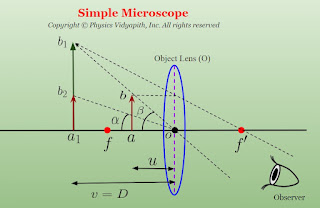Dielectric Materials:
Materials that do not allow current to flow through them are called insulators or dielectrics. Dielectric materials are capable of storing electric energy. Dielectric materials do not have free electrons ( in the case of ideal dielectric) because electrons are tightly bound with the nucleus so the conductivity of the dielectric is poor and for an ideal dielectric, it is zero.
When a dielectric is placed in an external electric field, atoms or molecules of the dielectric material are polarised due to the creation of an electric dipole in the atoms or molecules, and the internal field is set up in the dielectric material which opposes the external applied electric field, thereby reducing the net electric field and hence the electric potential difference. If these dielectrics are placed between plates of a capacitor, the potential difference will be reduced without affecting the charge on the plates.
According to the band theory of solids,
Examples: Glass, Plastic, Mica, Rubber, Wood, Turpentine oil etc.
Types of Dielectric materials:
Dielectric materials are of two types :
1.) Non-polar dielectrics
2.) Polar dielectric
1.) Non-polar dielectrics:
In non-polar dielectric materials, the molecules that are usually diatomic and composed of the same type of two atoms have a symmetrical structure that is the positive nuclei are surrounded by a symmetrically distributed negative electron cloud. The center of gravity of positive and negative charge distribution coincide and so the molecules are electrically neutral and have zero electric dipole moment.
Examples: $H_{2}$, $O_{2}$, $CO_{2}$, $CCl_{4}$, $C_{6}H_{6}$, $C_{6}H_{12}$, $CS_{2}$ etc.
Polarisation of the non-polar dielectric materials:
When a non-polar dielectric is placed in an external electric field the positive charge of the nucleus and negative charge of the electron cloud experience electric force which causes a displacement between the positive and negative parts of the molecule from their equilibrium position in opposite directions. The distance moved is very small $(10^{-10})$ because the displacement is restricted by storing force which increases with the increase of displacement. Therefore the centre of gravity of these positive and negative charges no longer coincide and molecules are said to be polarized. The molecules does acquire an induced electric dipole moment and aligned in the direction of external field. The induced dipole moment and the polarization disappear when an electric field is removed.
2.) Polar Dielectrics:
In polar dielectric materials, the molecules which are normally composed of two or more different atoms have permanent dipole moments because the center of gravity of these positive charges and that of the negative charges in a molecule are permanently separated by a finite but small distance. This is due to the asymmetric shape of the molecule. Thus each molecule in the polar dielectric material behaves as a dipole having a permanent dipole moment. Normally these molecules are in polar dielectrics and randomly arranged such that the net dipole moment is zero and the material acts as a neutral one.
Examples: $H_{2}O$, $CHCl_{3}$, $C_{6}H_{5}Cl$, $C_{6}H_{5}NO_{2}$, $C_{2}H_{5}OH$, $NH_{3}$, $HCl$, $CO$,etc.
Polarization of the polar dielectric materials:
when polar dielectric is placed in an external electric field the molecular dipole tense to align themselves in the direction of the field and acquire a considerable amount of dipole moment. this the dielectric act to be polarised.
In the $HCL$ molecule, the electron of the $H$ atom lies more toward the $Cl$ atom. The $H$ end of the $HCl$ molecule is positive and the $Cl$ end is negative. The molecule is therefore a dipole having dipole moment $\overrightarrow{p}$ direct from $Cl$ atom to $H$ atom.
Hence, the polarization of non-polar dielectric material is the displacement of positive and negative charge, and in the case of polar dielectric material, the polarization is the orientation of molecular dipole moment under the action of the electric field to which they are subject.
A dielectric is a material in which the energy band gap between balance and conduction band is more than three electron volt.
2.) Polar dielectric





